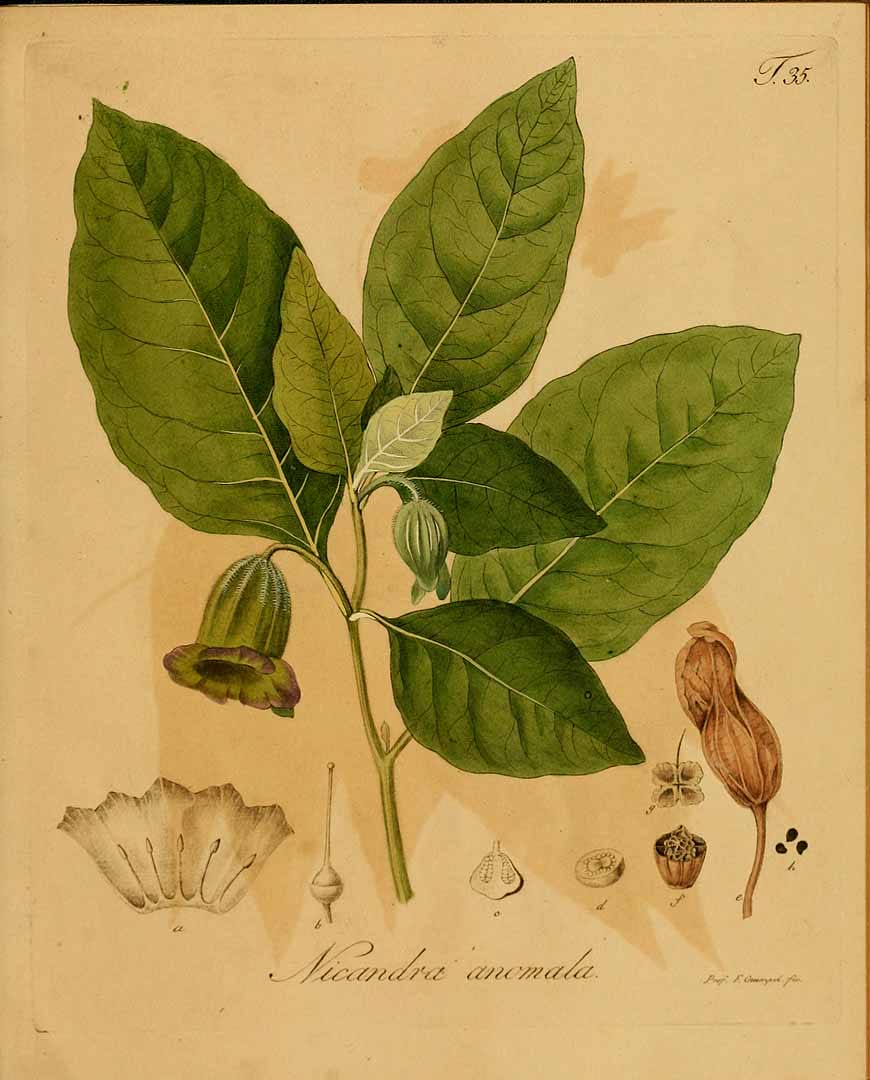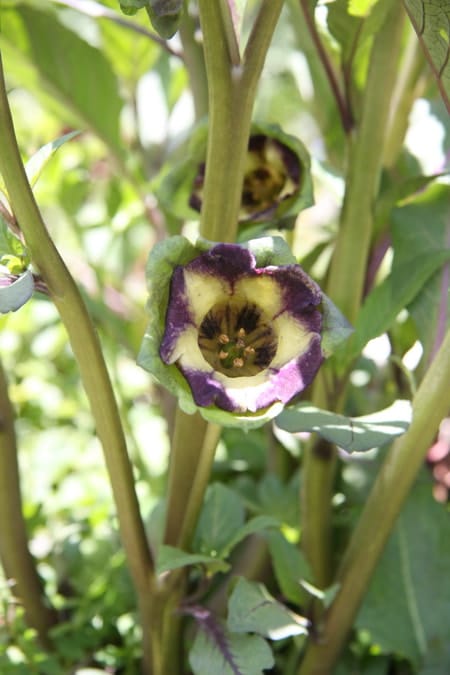Anisodus, Thang phrom nag po ཐང་ཕྲོམ་ནག་པོ་Thang phrom nag po (Tibet)Zang Qie (A. tanguiticus, TCM) Sai Lang Dang (A. luridus, TCM) San Fen San (A. acutangulus, TCM) |

|

|
 Anisodus luridus
Anisodus luridusLink, J.H.F., Otto, F., Icones plantarum selectarum (1828)
 Anisodus tanguticus
Anisodus tanguticusPhoto by BIO341prj (Wikimedia)
Botanical name:
Anisodus spp:
- A. tanguticus (syn. Scopolia tangutica) (Tibet)
- A. luridus (Nepal)
- A. acutangulus
- Thang phrom nag po: Anisodus tanguiticus
- Thang phrom kar po: Przewalskia tangutica
- Thang phrom dkar po: Mandragora chinghaiensis
- Thang phrom lang thang tse: Hyoscyamus niger
Parts used:
Seed, Root and Leaf
Temperature & Taste:
Cool, dry. Bitter. Toxic (Tibet)
Considered Warm by some TCM sources
Classification:
Uses:
1. Strongly Relieves Pain:
-severe Stomach and Abdominal pain
-pain and spasm of biliary ducts
2. Stops Spasms:
-acute spinal inflammation
-Shock from various causes including hemorrhagic shock (proven effective)
-Asthma
3. Clears Heat, Disperses Swelling:
-acute and chronic gastroenteritis (TCM)
-Shock associated with acute infectious diseases
-Toxic Swellings, Boils, Abscesses
-Snake Bite
-Trauma, Fractures
4. Externally:
-leaf or flowers are smoked to relieve Toothache (Nepal)
-as a topical anesthetic prior to resetting a fracture
Dose:
Decoction of the root and leaf: 300–900mg decocted and taken
Substitute:
1. Henbane
2. Seeds of Datura stramonium (Buryat)
3. Scopolia species are used very similarly.
Comment:
Anisodamine hydrobromide, one of the active ingredients, is used in injectable form in China. It is used as an anticholinergic in gastrointestinal spasms amongst other things.
Preparation:
Seed is prepared by being stir-fried until yellowish. (Tibet)
Main Combinations:
1. Severe gastric pain or Rheumatic pain, boil 900mg of the root and leaf and take in 2 divided doses.
2. Anesthetic prior to resetting a fracture, gring root and leaf to powder, mix with alcohol and apply. After 3–5 minutes the fracture can be set.
Major Formulas:
Cautions:
1. Avoid overdose. Contains tropane alkaloids.
2. Not used during Pregnancy, Breastfeeding or in the very young, or very old.
3. Avoid in Heart diseases and Glaucoma
Toxicity:
Anisodamine has an LD50 in mice of 350–430mg/kg i.p. and 123mg/kg i.v.
